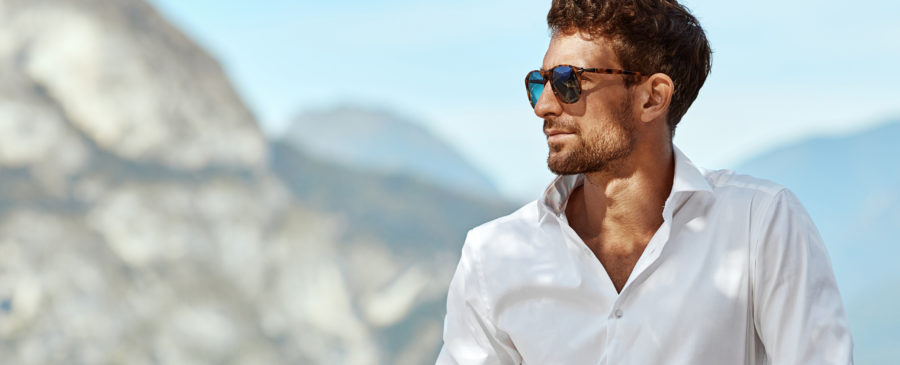The Power of Perception, and What It Teaches Us About Branding

What people perceive to be true can be a wildly powerful force. It can change their beliefs and even create physiological responses. This is the magic of our minds, or more specifically, the phenomenon of the placebo effect. The mind and body are so deeply connected that it turns out, the power of our perceptions can actually make us become what we believe. It has been proven through experiments with real-life situations of leadership in learning and the overwhelming influence of branding. Keep reading for some of the world’s most potent scientific examples of brand perception bringing forth the placebo effect.
Perception & IQ
In 1965, researchers Robert Rosenthal and Lenore Jacobson decided to examine the effects of a leader’s expectations. The researchers went to an elementary school in California to give a fake IQ test to children grades one through six. When one-fifth of the students were randomly chosen and identified as “growth spurters,” teachers, of course, believed the results to be accurate. The students were retested at the end of the school year and the effect was astounding. Nearly every student who was expected to perform better actually did, and physically so, with a greater IQ growth than the control-group students. Children in first and second grades even performed shockingly better!
This experiment is a key example of the placebo effect in action. The teachers believed that the selected children were smarter, and in turn, expected a higher level performance. This perception was likely powerful enough to impact the way they treated the children and how they estimated the children’s investment in their learning. Due to the placebo effect the teachers experienced, they in essence, looked at the supposedly smartest children much like they would a highly desirable brand. But this experiment is just one of many that demonstrate how truly powerful brand perception can be. One of the key reasons that we form such strong emotional connections to our favorite brands is because of their ingenious abilities to enact placebo effects through their careful marketing strategies. Let’s take a look at some examples in branding…
Price
The three researchers (Baba Shiv, Ziv Carmon, and Dan Ariely) were curious about whether the perceived value of a product would affect consumers physiologically. Would an individual’s belief about the price of an item make an expensive product actually work better in the eyes of a consumer? They offered participants “discounted” energy drinks to consume once before and once after their workouts. These participants reported not only a significantly lower intensity to their workout but also a higher fatigue than the group who believed they consumed a full-priced drink. The participants subconsciously internalized a negative assessment to the discounted product. The result? A powerful placebo effect.
Reputation
In 2011, researchers from the Hebrew University of Jerusalem looked into what a brand’s reputation meant about its functionality. Sixty participants were given the exact same sunglasses to reduce glare while completing a task with a financial incentive to perform as quickly and accurately as possible. Half of the participants received a pair of sunglasses labeled “Ray-Ban.” The other half received sunglasses with a lesser known, inferior brand, “Mango.” The results were equally shocking. Participants wearing sunglasses labeled as Mango made, on average, twice as many mistakes. But it gets juicier. Participants wearing the Ray-Ban labeled sunglasses also performed significantly faster. The placebo effect was clearly in play. Ray-Ban’s reputation and brand perception was strong enough to create a better performance.
Culture
A study using the scientific qualities of human beliefs examined the impact of branding through fMRI imaging. Volunteers were delivered Coke and Pepsi in unmarked cups. Unsurprisingly, preference was equally split between the anonymous colas. Here’s where it gets interesting… In the second phase of the experiment, the researchers revealed a brand name for the cola drinks participants received. They unanimously preferred Coke over Pepsi. Now, for the real magic. When participants were examined with fMRI imaging, the results showed that Coke actually illuminated the memory-related centers of the brain but Pepsi drinkers did not experience the same physical response.
Even when participants offered Coke were told they were given Pepsi and vice versa, the brain only reacted in the fMRI images when participants thought they were drinking Coke, regardless of which drink they actually consumed. The researchers decided that the brand’s cultural influences went so deep as to produce a physical response in the brain for one drink and not the other. The results are clear. Our brand perceptions are so powerful that they can create a measurable physiological change in our experience with a product.
Several distinguished studies, including research of my own, demonstrate that the placebo effect is alive and well in the world of branding and can have a wildly strong impact on consumer experiences. My book, BRANDcebo, goes into depth about the three most potent ingredients to reach a placebo effect in branding. I explain Priming, Expectation, and Desire; how they work together; and how to implement them in your marketing and brand development strategy to achieve BRANDcebo. Buy the book here to find out how to not only make your products seem better to consumers but to see them actually work better too!
